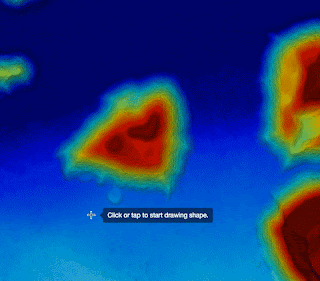As public-safety agencies worldwide continue to discover more and better ways to use drones (examples here, here andhere), American police officials wrestle with questions regarding whether or not their departments should take the UAV plunge given so much ambiguity regarding drone regulation at the state and municipal level.
In Rochester, Minn., the local police department thinks drone deployment could help quickly locate a suspect immediately following a crime. Led by Officer Rey Caban, the department isrequesting one drone to be used for “missing or endangered persons cases, hostage situations, dangerous apprehensions or even in natural disasters.”
Although the department has not decided on a specific model yet, officials say they want to spend $15,000 for a drone that can fly for at least 30 minutes to be equipped with thermal and night-vision camera capabilities.
“The main goal of having a UAV for the department is to save lives, it’s not to spy on people,” Caban told the Post-Bulletin. The measure must be approved by the county commission after a public hearing.
Currently, Minnesota has no laws dealing with drone use by police — however, as writer Taylor Nachtigal points out: “Changes will likely come after legislationwas introduced in the Minnesota Legislature last session that would regulate drone use and ban their use for gathering ‘evidence or other information on individuals.’”
Meanwhile in Snohomish County, Wash., the chief pilot of the sheriff’s office is advising public safety agencies in the region to delay making any drone purchases for now as the Evergreen State’s own legislature contemplates new UAV rules. Sheriff’s Officer Bill Quistorf believes there are too many privacy concerns under debate.
“We’re not even close to using it for law enforcement,” Quistorf said in an interview with The Herald of Everett, Wash. “There are larger hurdles to clear if we have any proposed plan to use it for law enforcement.”
Currently, the state legislature is still reviewing drone policy. In 2014, Gov. Jay Inslee vetoed lawmakers’ first effort to regulate UAVs. Quistorf told reporters that he predicted “public agencies eventually will be required to keep archives of drone flight logs, operator information, aerial photos and videos. All of that information could be disclosable under public records laws – that raises concerns because drones are likely to capture images of people’s faces, license plates and other data, he said. Those issues need to be sorted out.”
Of course, any new state laws concerning drones may be rendered moot after the FAA released a Fact Sheet in December warning that the federal agency retained sole “authority to regulate the areas of airspace use, management and efficiency, air traffic control, safety, navigational facilities, and aircraft noise at its source.”










